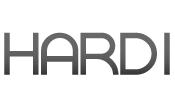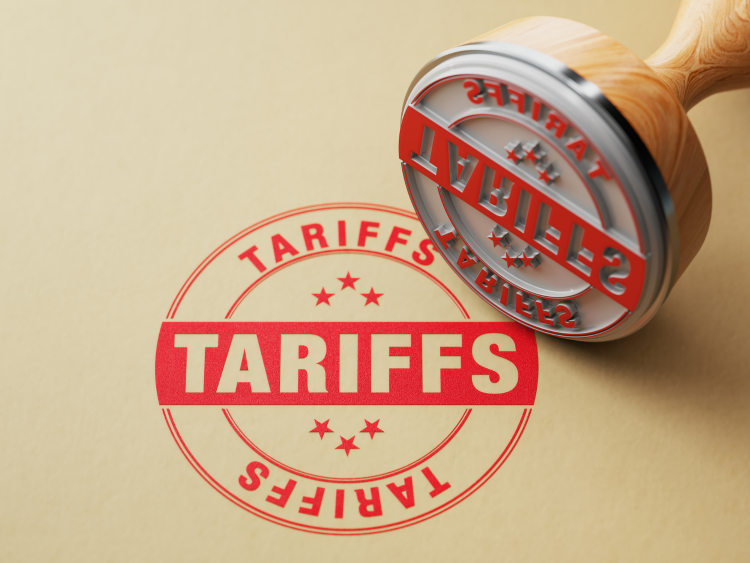Steel Products

HARDI: Will Galv Supplies be Tight in 4Q?
Written by Tim Triplett
May 15, 2018
Demand remains strong and prices for galvanized steel have begun to level off after rising for most of the year, which is positive news for the HVAC industry. However, a big decline in foreign imports could dramatically reduce the availability of coated steel later in the year. “In the fourth quarter, there could be quite a squeeze on supply,” warned Steel Market Update Publisher John Packard during the monthly conference call with members of the Heating, Air-conditioning, and Refrigeration Distributors International (HARDI) on Monday.
![]() The distributors of HVAC products reported limited offers for foreign galvanized in the market, most of them near the domestic price. “No one is really pulling the trigger on import because of the risk of the long lead time,” said one service center exec.
The distributors of HVAC products reported limited offers for foreign galvanized in the market, most of them near the domestic price. “No one is really pulling the trigger on import because of the risk of the long lead time,” said one service center exec.
Like in other steel sectors, buyers of HVAC products have been marking time waiting to see how the Trump administration’s steel tariff plays out. The 25 percent tariff is already in effect on product from China, Russia, Japan, and others. Australia, Argentina and Brazil have agreed to quotas to avoid the tariff. Nations including Canada, Mexico and those in the EU were given an extension until June 1 to negotiate deals on how much steel they can export to the U.S.
Steel imports remain strong so far. All products are projected to finish April well above their 12-month average. April saw galvanized imports of around 362,000 tons. But steel ordered prior to the March 1 tariff announcement is just now arriving in the U.S. With few new foreign orders in the pipeline, galvanized could be harder to come by in a few months, Packard said.
President Trump’s tariff has had unintended consequences for individual mills, notably CSN and NLMK, which depend on importing hot bands or slabs from their parent companies for rolling in the United States. The steel CSN receives from its Brazilian parent will be restricted by the new quota. NLMK has appealed to the Commerce Department for an exclusion from the tariffs. Depending on the tariff/quota situation, the two companies could find themselves at a major competitive disadvantage to domestic competitors, which could affect their output and add to the short supply situation expected later this year, Packard said.
On Monday, Steel Dynamics announced the acquisition of the CSN Heartland flat rolled steel mill in Terre Haute, Ind., for $400 million in cash. The CSN plant has the ability to roll 1 million net tons of cold rolled and to coat approximately 360,000 net tons of galvanized. “For HARDI members, that would be a positive development as it would guarantee a source of supply, though perhaps at higher prices,” Packard said, just prior to SDI’s announcement.
The strength of steel imports is somewhat misleading, noted one service center executive, as much of the material is coming from Canada. According to a domestic steel mill SMU spoke with in Chicago last week at the Boy Scout Dinner, Canada’s Stelco reportedly is shipping slabs into the U.S. and in turn is bringing foreign slabs in for the Canadian market.
Freight continues to be an issue for HARDI members. A new regulation that took effect this year requiring electronic logging devices has caused a shortage of trucks as drivers can no longer underreport their hours behind the wheel. “We think the biggest issue right now is transportation. Truck rates are at $2.65 per mile, the highest number in a long time,” said one HARDI member. “Logistics is a pain. Rates are up from every source,” said another. “All our contractors say it is a nightmare to get trucks to move material,” commented a third.
An East Coast wholesaler complained of products being sold by non-traditional HVAC suppliers at prices below replacement costs. Other wholesalers disputed that view and reported seeing resale prices on galvanized steel ” two to three cents per pound above replacement pricing.”
The HARDI members are pleasantly surprised that demand remains solid despite a galvanized steel price that has risen from less than $800 a ton to more than $1,000 a ton since the beginning of the year. Pricing is leveling off at both the mill and street level, which is a positive development, but don’t look for prices to decline any time soon, said one distributor. “The mills seem to be walking in lockstep with each other. No one is stepping out of line to give you a deal at this point. They don’t want to break ranks.”
Steel Market Update participates in a monthly steel conference call hosted by HARDI. The call is dedicated to a better understanding of the galvanized steel market. The participants are HARDI member companies who are wholesalers, service centers and manufacturing companies that either buy or sell galvanized sheet products used in the HVAC industry.

Tim Triplett
Read more from Tim TriplettLatest in Steel Products

Steel buyer spirits tempered by soft spot market conditions
Steel sheet buyers report feeling bogged down by the ongoing stresses of stagnant demand, news fatigue, tariff negotiations or implementation timelines, and persistent macroeconomic uncertainty.

CRU: US stainless prices to rise on expanded S232 tariffs
Stainless prices in the US market will rise, following price increases by major US producers. Our base case scenario incorporates higher US prices in the near term, despite the initial negative reaction by the market. US stainless prices will go up in 2025 H2 and will stay elevated in 2026 as tariffs on stainless […]

Galvanized steel demand unsteady amid lingering buyer fatigue: HARDI
Uneven demand for galvanized steel in June reflects a market that remains mired in uncertainty, according to industry sources.

OCTG industry salutes Customs for catching trade crooks
The US OCTG Manufacturers Association is commending US Customs for intercepting another Thai company's attempt to illegally transship Chinese oil pipe to the US.

Whirlpool says tariffs will bolster business
“Economically, the business case for products made in the us has become a lot more attractive," the CEO told Fox Business.
